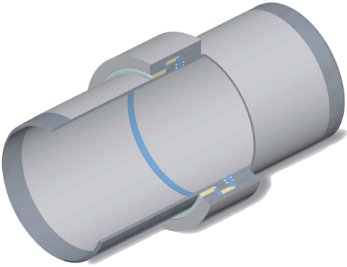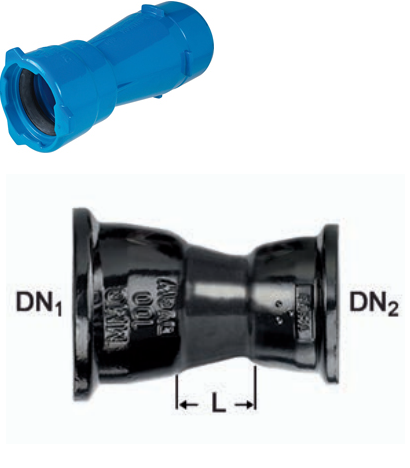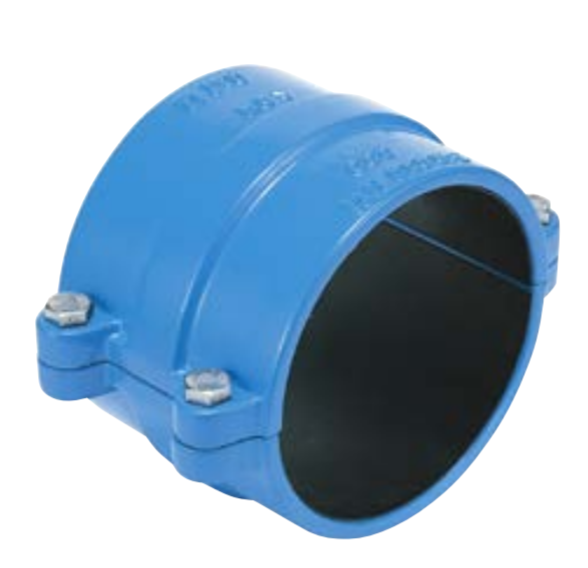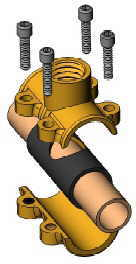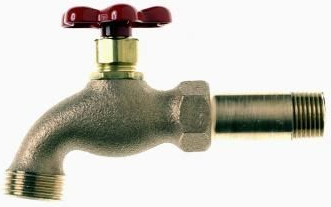Pipe connections (FittingElement) are components that are used to connect pipes and pipe sections to other devices. The fittings can be welded or threaded, mechanically joined or chemically bonded. The type of connection depends on the material of the pipes to be connected.
These weld seams are also collected in the Fittings as Sleeves.
As a rule, the pipes have connecting systems (sleeves) which depend on the material used.
Further information can be found in (Horlacher & Helbig, 2016)/(Horlacher & Helbig, 2018) (in German) and the Manufacturers.
|
|
|
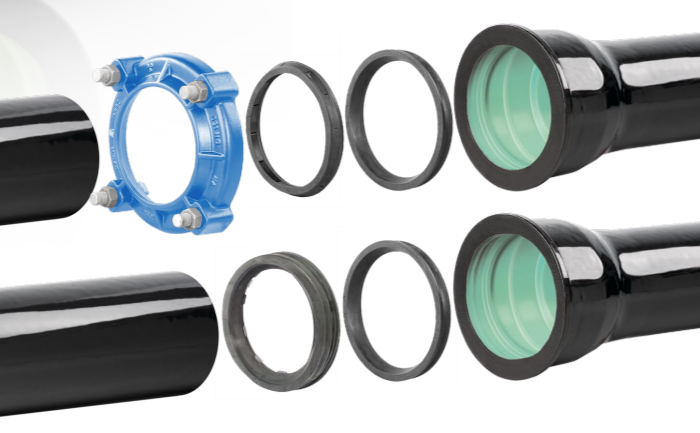 Plug-in sleeves - Cast iron pipe |
Sleeve / Screw joint / Weld seam
General generic term for connecting element between two pipes. A wide variety of connection forms exist for this purpose: Plug-in sleeves, compression fittings, threads, flanged joints, sleeves, steel-welded joints, etc.
|
|
|
|
|
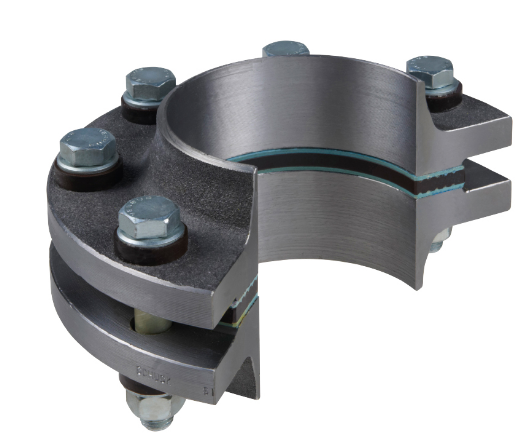 Insulating flange pair, screwed |
Insulating piece
The insulating pieces are used to interrupt the electrical conductivity of a pipeline or a system of cathodic corrosion protection.
|
|
|
|
|
|
|
Reduction
Caliber change between two different pipe diameters. There are also special forms which allow a change of material at the same time. In this case, the term coupling piece is used.
|
|
|
|
|
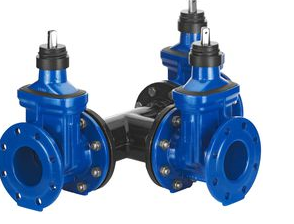 T-piece with gate valve |
Tee
Connects three lines at right angles to each other.
|
|
|
|
|
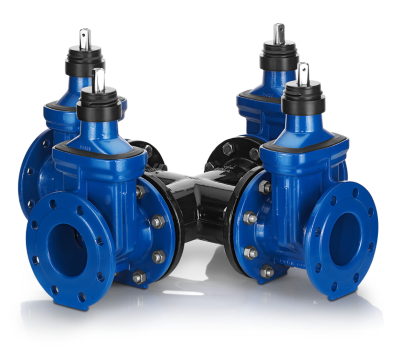 Double Tee or cross with gate valve |
Cross / flange cross / double tee (TT)
Analogous principle to the tee, but with 4 instead of 3 outlets.
|
|
|
|
|
|
|
Repair clamp / Clamp / Pull-over sleeve
Often used for small repair spots.
In practice, the damaged area is usually removed and replaced with a new pipe and a collar/pull-over sleeve.
|
|
|
|
|
|
|
Tapping clamp
The tapping clamp is used for connection to a line. In this context, there is also the slide clamp / tapping slider, which combines the basic fitting of the tapping clamp with a slide valve.
|
|
|
|
|
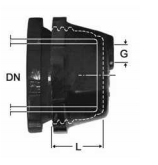 Cap 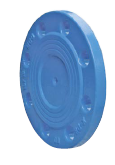 Blind flange |
Cap / blind flange
Serves to close a line. The characteristics for plastic pipes and cast iron pipes are different.
A cap is placed at the end of a line to close it.
A blind flange is a plate which is screwed or welded onto the end of the pipe.
Cast iron / steel / plastic: Usually, electrofusion sleeves are being used.
Spigots and caps are also used for pressure testing, but are not of the same design.
|
|
|
|
|
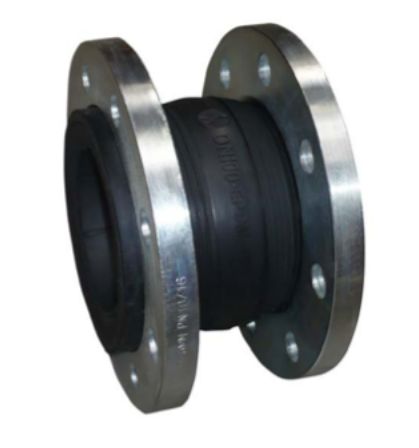
|
Compensator
A compensator is used whenever vibrations in a system need to be absorbed. As a rule, they are designed for compression, expansion, lateral displacement and for bending.
|
|
|
|
|
|
|
Faucet
Is the end piece of a pipe, which at the same time can release the water from the water network to the recipient in a controlled manner via a tap.
|
|











